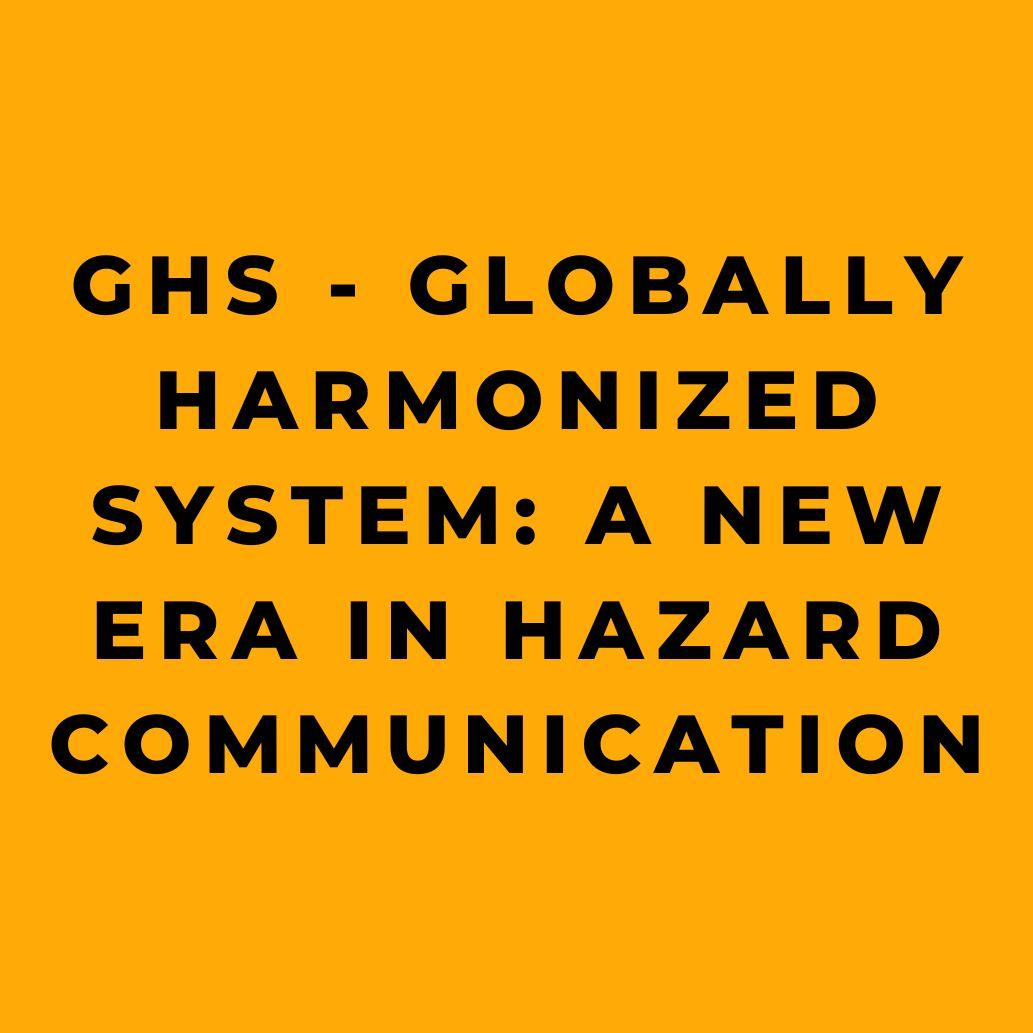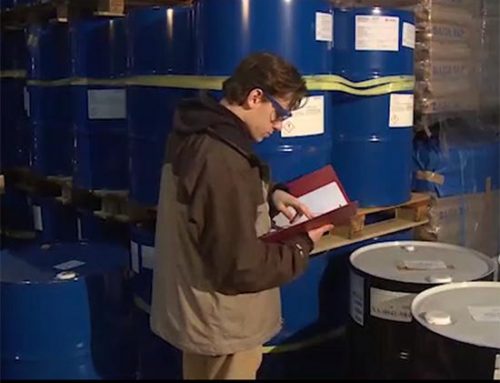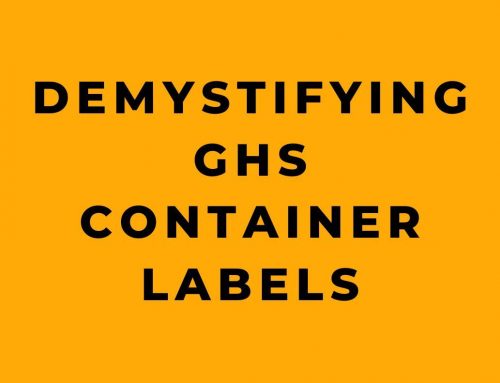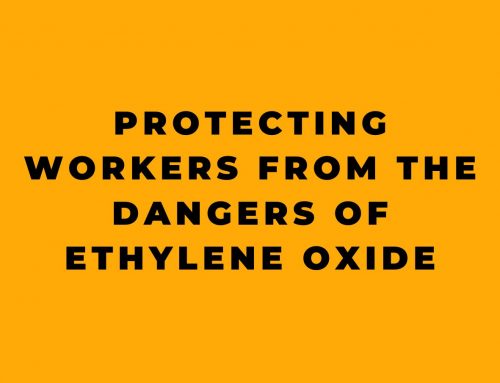Introduction: This article summarizes key information from an online training course on OSHA’s adoption of the Globally Harmonized System (GHS) for chemical hazard communication. Read on to learn about the GHS, why OSHA adopted it, major changes it brings, implementation timelines, and how it will improve hazard communication.
What is the Globally Harmonized System?
The Globally Harmonized System of Classification and Labeling of Chemicals (GHS) is a system aimed at standardizing how chemical hazard information is communicated on a global scale. It was developed by the United Nations and hazard communication experts to address inconsistencies between the various chemical regulations of different countries.
The GHS provides a logical and comprehensive framework for:
- Defining the health, physical, and environmental hazards posed by chemicals
- Classifying chemicals using consistent criteria
- Communicating hazard information and protective measures through labels and safety data sheets
This helps to ensure chemical risks are clearly understood by workers, no matter where they are in the world.
Why Did OSHA Adopt GHS?
OSHA adopted GHS for several important reasons:
- To standardize chemical hazard descriptions and classifications in the U.S., bringing them in line with international norms. Under the original Hazard Communication Standard (HAZCOM), companies could use varying approaches to classify and describe chemical hazards. This caused confusion among workers trying to interpret safety data sheets and labels from different manufacturers.
- To make hazard communication clearer and more understandable. The flexibility of the original HAZCOM standard allowed companies to use unclear language on safety data sheets and labels. Standardized GHS hazard statements and pictograms aim to transmit information in a simpler way.
- To facilitate international trade. Adopting GHS allows U.S. companies to use a single set of labels and safety data sheets in the global marketplace, reducing costs of compliance.
Major Changes GHS Brings to HAZCOM
While the GHS does not replace the original Hazard Communication Standard, it does modify it in important ways. Most significantly, GHS transforms HAZCOM from a “performance-based” standard to one that spells out precise requirements.
Under the original performance-based approach, HAZCOM defined what chemical hazard communication needed to accomplish, but allowed considerable flexibility in how companies achieved it. This contributed to inconsistencies in classifications, labels, safety data sheets, and more.
GHS takes the opposite approach – it prescribes standardized processes and formats to achieve uniform hazard communication. For example, it sets out exact label elements, safety data sheet sections, and hazard statement wording that companies must use.
So while HAZCOM still mandates chemical producers and distributors to evaluate hazards, provide labels and safety data sheets, and train workers, GHS defines precisely how to fulfill these core responsibilities.
There are four major areas where GHS modifies HAZCOM:
- Hazard classification
-
- Provides specific criteria and evaluation methods for classifying health, physical, and environmental hazards
- Establishes hazard classes such as carcinogens and hazard categories indicating severity
- Labels
-
- Standardizes label elements including pictograms, signal words, hazard statements, and precautionary information
- Specifies label format and layout
- Safety Data Sheets
-
- Dictates consistent, standardized formatting and content
- Requires expanded hazard information in Section 2
- Training
-
- Covering new label elements and safety data sheet format
- Required when new hazards are introduced
Hazard Classification Under GHS
The GHS introduces more structured criteria for classifying chemical hazards. Hazard classes are further divided into hazard categories reflecting the relative severity of the hazard.
There are two major groups:
- Physical hazards (e.g. flammable solids, self reactives)
- Health and environmental hazards (e.g. carcinogens, aquatic toxicity)
Previously subjective under HAZCOM, hazard evaluation is now based on detailed criteria laid out in the GHS “Purple Book.” For example, flammable liquids are classified into 4 categories based on flash point and boiling point.
GHS Labels for Workplace Containers
For shipping containers, GHS requires application of standardized labels. But for in-plant containers, employers can choose to replace older labels with GHS labels, or use “alternative workplace labels” that include the standard GHS label elements.
Alternative workplace labels must contain:
- Product identifier
- Signal word
- Hazard pictogram(s)
- Precautionary statements
Workplace-specific supplemental information can also be included. This option ensures employees have access to key hazard data in-house, while allowing employers to customize labels for their unique needs.
GHS Safety Data Sheets
The GHS equivalent of OSHA’s material safety data sheet is referred to as the Safety Data Sheet (SDS). The 16 section SDS format will be familiar to U.S. workers, however there are some key differences:
- Section 2 requires expanded information on hazard classification, including GHS classification, pictograms, signal word, hazard statements, and precautionary statements
- All sections have standardized content and presentation
GHS Labels
GHS standardizes the presentation of hazard information on chemical container labels. GHS labels include:
- Product identifier
- Supplier information
- Hazard pictograms
- Signal word (“Danger” or “Warning”)
- Hazard statements
- Precautionary statements
The pictograms and hazard statements are based on the GHS classifications. The label format and layout follows a consistent standard.
GHS Training Requirements
As with HAZCOM, GHS requires employers to train workers on new label elements and safety data sheet format. Retraining is needed when new hazards are introduced. Deadlines for training are:
- December 1, 2013: Train on new label elements and SDS format
- June 1, 2016: Train on any newly identified hazards
GHS Implementation Timeline
OSHA set out a phased timeline for GHS implementation:
- December 2013: Train employees on GHS changes
- June 2015: Fully comply with GHS requirements
- June 2016: Update in-house container labels and HAZCOM program. Complete any new training.
During phase-in, employers can comply with either GHS or original HAZCOM requirements.
Conclusion
The Globally Harmonized System enhances OSHA’s original Hazard Communication Standard by introducing consistent, standardized hazard classification and communication worldwide. This improves clarity and understanding, while also facilitating international trade. Although adjustments are required, GHS will make working with chemicals safer for employees everywhere. Thorough training and full implementation by specified deadlines will ensure a smooth transition to this new era in chemical hazard communication.
As we’ve explored, the Globally Harmonized System (GHS) doesn’t just streamline hazard communication—it revolutionizes it. With its standardized protocols and precise requirements, GHS fundamentally changes how we engage with chemical safety, all the while improving the clarity of communication and facilitating international trade. Meeting these rigorous new standards isn’t an option; it’s a necessity. And that’s precisely where specialized training programs can make all the difference. Training isn’t just about ticking off a box in a compliance checklist; it’s about equipping your employees with the knowledge and tools they need to navigate this new landscape safely and effectively.
So, how can you best prepare for this new era in hazard communication? The answer lies in Our full-length interactive courses on “Introduction to GHS (The Globally Harmonized System).”
Imagine a world where compliance isn’t just a box you check but a strategy to protect your most valuable asset—your people. In the intricate maze of OSHA’s GHS regulations, the risk of falling short is not just a fine; it’s the well-being of your team at stake.
Here comes the game-changer: Our full-length interactive courses on “Introduction to GHS (The Globally Harmonized System).” We’ve designed these courses with a singular focus—to make your facility an impenetrable fortress of safety compliance.
Why should you consider this seriously? Two words: OSHA adoption. The authorities are ramping up regulations; the risk of falling behind is too great to ignore. This isn’t just another training program; it’s a lifeline for your compliance strategy.
Our full-length interactive courses cover everything you need:
- What is the Globally Harmonized System? Understand the global standard that’s been adopted by OSHA.
- Why Did OSHA adopt the GHS? Grasp the underlying reasons and what it means for your facility.
- Hazard Classification: A deep dive into risk types and how to mitigate them.
- The Safety Data Sheet: Your roadmap to safe chemical handling.
- Container Labeling: Master the text elements and pictograms for fool-proof safety.
- Information and Training: The core of compliance and workplace safety.
- GHS Phase-In Dates: Know the crucial timelines to keep your facility ahead of the curve.
And guess what? Language will never be a barrier. Our courses are available in both English and Spanish, ensuring that your diverse team is on the same page.
So, when the audit comes knocking, with Our full-length interactive courses, you won’t just be ready—you’ll be ahead.
Check out our free demonstration today:










